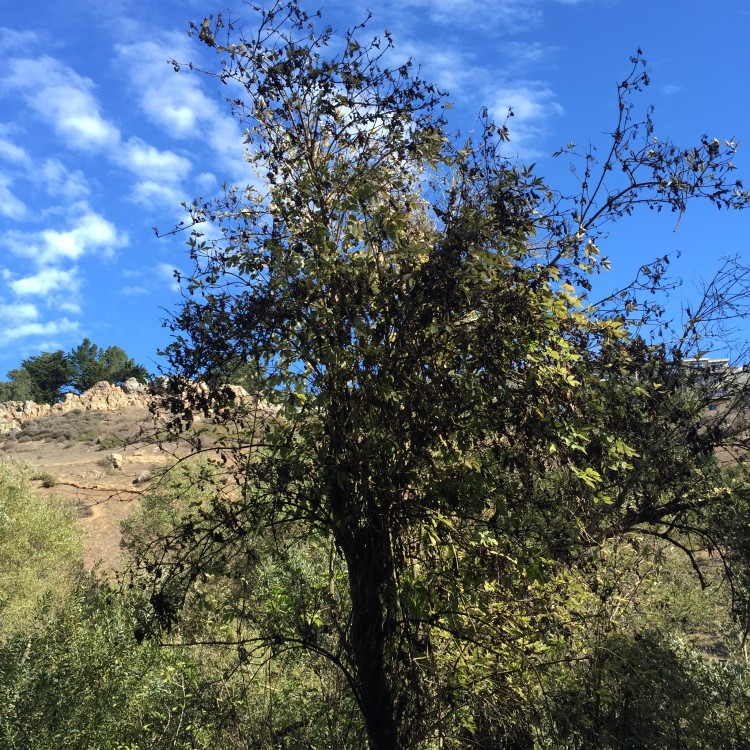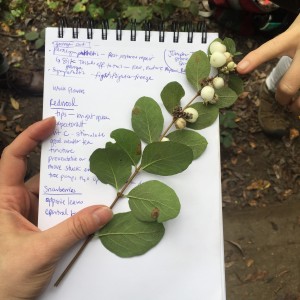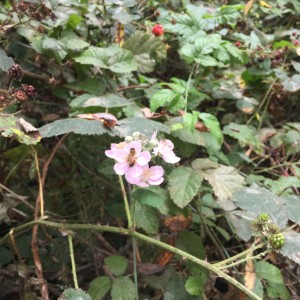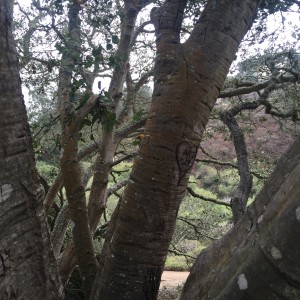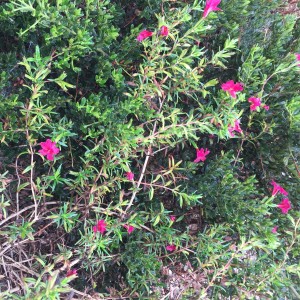As part of my herbal medicine program, I participate in monthly plant identification walks offered by our teachers. This month, we travelled to Glen Canyon Park, which is only a quick train ride south from the center of San Francisco. The Glen Park neighborhood was originally isolated from downtown San Francisco due to its steep topography due to the dominant natural feature in the neighborhood—a 500 foot deep canyon, much of which was reserved as a city park in 1922. Prior to becoming a park, Glen Canyon was the site of the first commercial dynamite manufacturing plant in the United States in 1868 and later the site of dairies and cattle grazing in the 1870s. The area did not become a residential enclave until the 1890s, when the first public transit was provided to the area and the land was subdivided for housing. The canyon was a popular urban picnic area during this time and continues to be an outdoor recreational destination for residents today.
Clockwise from top left: Attempts to identify Snow Berry, the last Blackberry blossoms of the season, a grand old Live Oak, and pink monkeyflower.
I was surprised at the variety of medicinal plants growing in the park and we were able to identify dozens of species. It was interesting to witness the plants going into their dormant state, and with few flowers remaining, it made exact identification tricky. Doing plant identification in the fall offers a good lesson in look-alikes (hello poison oak) and forces you to really look carefully at all of the plant’s parts: roots, stem, branches, leaves, buds and flowers. We saw rose hips, a few remaining blackberry blossoms, willow, monkey flower, redwoods, live oaks, usnea lichen growing from the trees, plum trees, and many more plants that play an important role in our local apothecary. My biggest surprise was findings majestic elder trees, which are one of my favorite herbal allies and something I look for everywhere I travel. I’ve seen incredible stands of elders in Yosemite and along dried stream beds while hiking at Mount Diablo, the Anderson Valley, and in the Columbia River Gorge in Oregon, but it had never occurred to me that this herb lived alongside me in the city. I cannot wait to return to Glen Park in the spring and see the plants again in their flowering state, and to spend some time with the great elders and the fairies (Hint: I share more about the relationship between elders and fairies in the San Francisco Box).
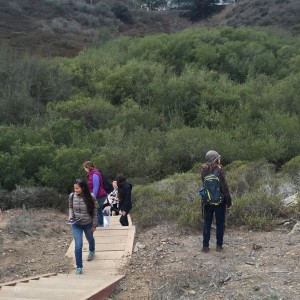
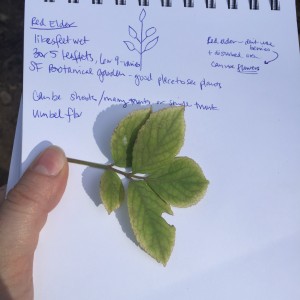
L to R: Hiking up from the canyon floor, and Elder leaves.
Further Reading about the history of Glen Canyon Park:
“Glen Park — The Architecture and Social History” by Christopher Verplanck. Online: http://www.sfaa.org/0112verplanck.html
“A Dynamite History for Glen Canyon by Alex Bevk. Online: http://sf.curbed.com/archives/2012/12/03/a_dynamite_history_for_glen_canyon.php

